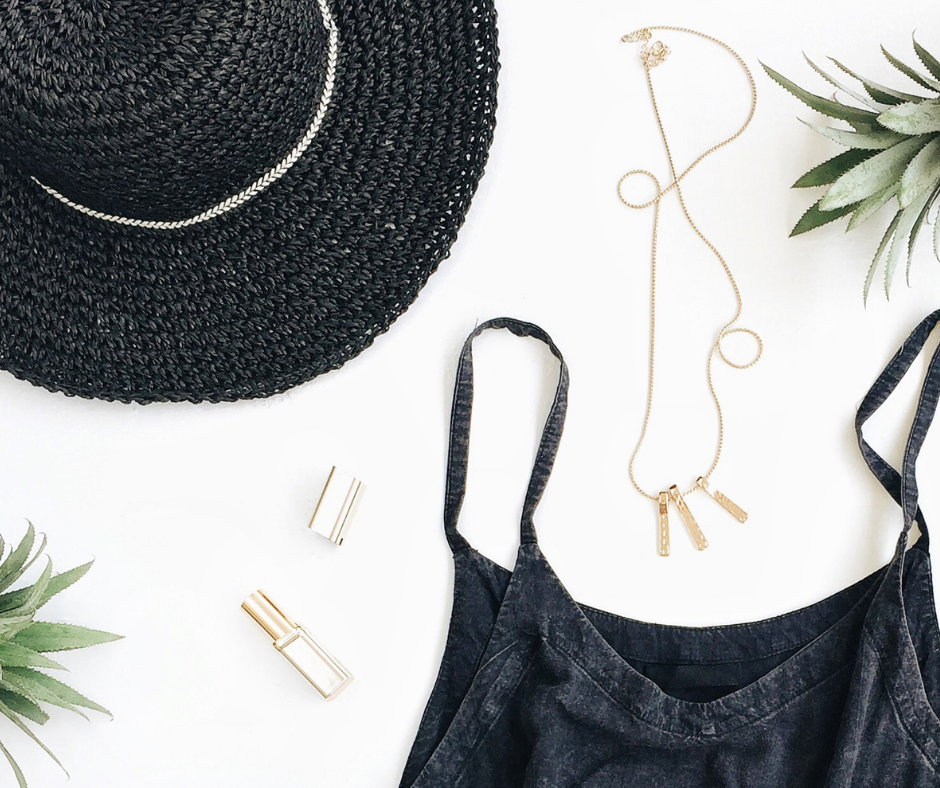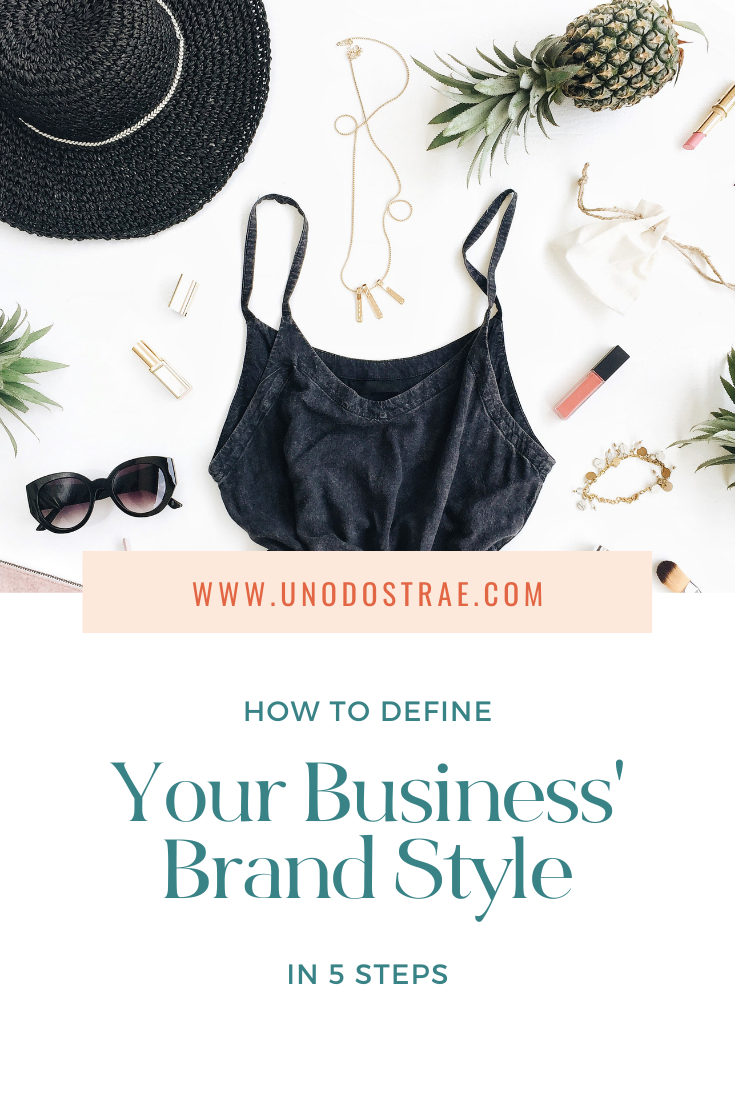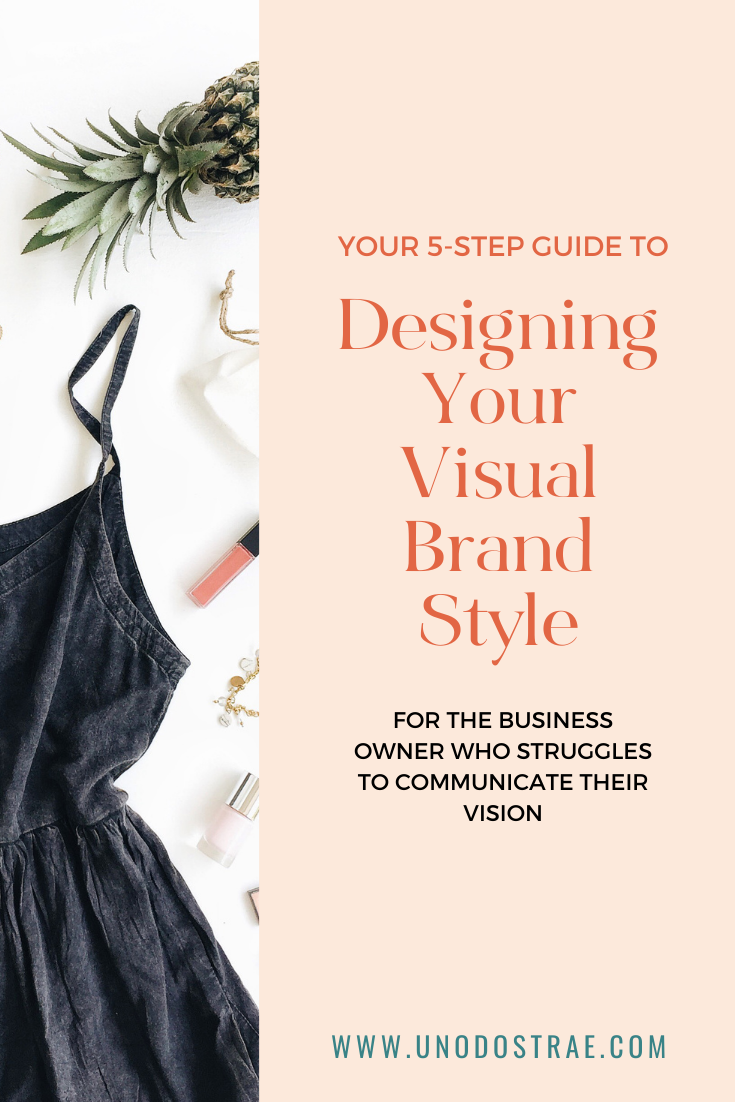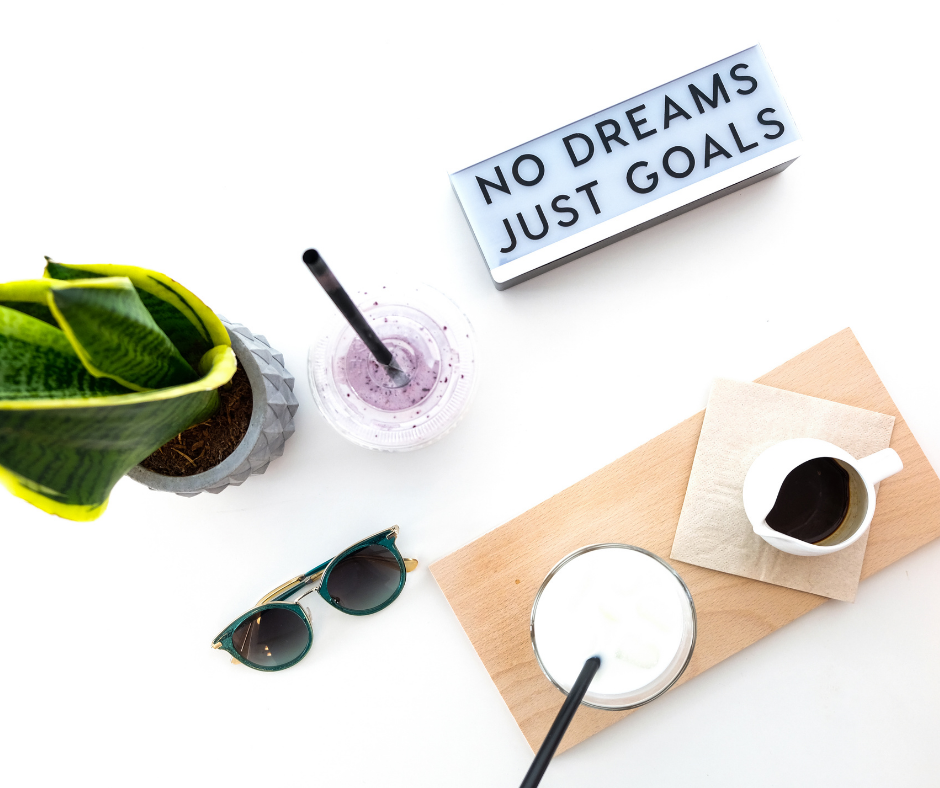
When it comes to designing your visual brand style (or working alongside a designer that’s doing it), it can be really tricky to hone in on your own personal style. While most entrepreneurs know what they like and what they don’t like — to a certain extent — it’s still a pretty common problem to know which aspects of it to actually bring into their business and their branding.
The result? A ton of entrepreneurs get stuck in a state of indecision where committing to anything is hard — and then they end up with branding that they get really tired of, really fast. Not great! Especially when you’re making an investment to build it out and take your brand to the next level. We like to call this analysis paralysis, and it’s one of the top ways I see brand builders and entrepreneurs end up with bottlenecks in their own businesses.
Sound like you?
Here’s the thing: it’s not supposed to feel quite as hard as it probably does. There’s nothing wrong with letting your own style show up in your branding and taking the time to develop that style is one of the best things you can do for your business as a whole.
5 Steps to Determine Your Brand Style
So, I want you to close your eyes and take your self waaaaay back. Back when you were walking the halls of middle school starting to figure out what earrings you wanted from Icing or shoes you were going to beg your parents to get you from JcPenney was a big deal. It determined how you walked through life, it’s how you started deciding how you wanted to represent yourself, and it’s how you began defining a lot of your self-knowledge.
Can you see it in your head? (I can see the colored Vans now.)
It’s the same thing with your business’ brand style. By developing that unique style of your own — and growing with it — you can help attract more of your ideal customers and create things for your business that *actually* excite you. Here’s how to do it:
Step 1: Think About Your Ideal Customers.
Who are you speaking to from a brand standpoint? Who is going to read your blogs, subscribe to your email list and eventually purchase services or products from you? While you always want to integrate your own personal style into your brand style, it’s also important to make sure that it will resonate with that group of ideal customers you’re trying to connect with. You probably have a good idea of who your ideal customers are from a business standpoint, but I’d also encourage you to make sure you’re right about it, too. After all, you may be attracting an entire audience that you don’t even realize.
Uno Dos Trae Tip: Take a few hours to dig into your analytics, comb through your social media following, and track your leads. What’s the average age of your audience? Who else do they follow? What content do they seem to love the most? What resonates the most with them? You may be surprised.
Step 2: Consider Your Competition.
While copying your competition isn’t something you should ever do (and it puts you on the fast track to being unmemorable), I also think that getting inspiration from other people and brands in your field can be super powerful. You can see what’s already been done, you can start to decide what you like and don’t like, and you can start to see how the things that actually resonate with you stand up in the wild. The thing is, you just really can’t develop your design style in a vacuum and expect it to be successful. You need to see what’s been done, and where there’s room to do something different — so take note of the things you like and the things you don’t like, and go from there!
Uno Dos Trae Tip: Pinterest and Instagram are really great for this — so get scrolling! I love making boards of designs and things that I love from other brands and businesses, and it’s actually been a really great way for me to truly decide what I love and don’t. You can also save things and make folders on Instagram, too — which is super helpful and so, so easy.
Step 3: Get Inspired Every Chance You Get.
Your brand style should absolutely relate (at least a little) to the industry you’re in, but that doesn’t mean that you should only look at things like yours to get inspired. Instead, remember that the world is your oyster — and you can find inspiration no matter where you look, whether it’s from traveling and walking downtown to the design on your favorite coffee shop’s drink sleeves and music you really love. When you start looking at inspiration from a holistic perspective like that, you start realizing that style is so much more than colorways and font guides. Really, it’s the way you (and your audience) feel when they touch your brand — and focusing on that can be incredibly impactful.
Uno Dos Trae Tip: Create a folder on your computer that encompasses every vibe and feeling you want to take into your brand, whether it’s an album you love or a photo that makes you happy. Everytime you feel inspired by something, drop it in there — it creates a vault of inspiration that you can continually pull from and come back to.
Step 4: Bend The Rules!
There are design rules that, to a certain extent, need to be understood — and there’s a lot to be said about carving out time to visit the basic rules, principles, and conventions of really good design. That said, design rules don’t necessarily have to be followed… you just need to understand why they exist and the purpose they serve. You can have fun and still create really impactful designs that don’t follow a standard set of rules, and when you understand why the rules are there you can break them effectively. Experiment with color palettes that are unexpected and don’t follow the traditional schemes, combine fonts in unexpected ways, and play with designs that make you excited and plugged in.
Uno Dos Trae Tip: Challenge yourself to do something out of the box when you’re working through your visual branding, even if it makes you a little uncomfortable at first! Those unique touchpoints are what will make your brand memorable — and plus, it’s just fun to break the rules sometimes.
Step 5: Keep It Flexible.
While having your own design style is an important piece of building your brand and attracting the right kinds of clients, it won’t stay effective if you’re not flexible. The goal is always, always going to be to serve your client — and that means that in some instances you may need to deviate from sticking rigidly to your own style, especially if you provide services like graphic design, copywriting, or brand identity packages. If you’re not going to be willing to deviate from your style, you’ll have to be really mindful of the clients you take on… because the job is always to serve them well, no matter what.
Uno Dos Trae Tip: Make sure you’re consistently checking in with your own style, revisiting your own brand guidelines, and switching things up as time goes on. I love doing a quarterly review of all things in my business — style included — because otherwise, I wouldn’t take the time to do it. When you hold yourself accountable to checking in, it’s so much easier *to* be flexible.
With practice, hard work, growth, and a willingness to change, your voice will shine through your brand… and your personal style will, too. Building a brand that’s memorable and connects with people (including you!) is hard, but it’s important — and trusting your own gut always means more than you might think. My favorite way to do this is with my own go-to brand review, which you can download for free here. Just remember: you know what you’re doing, and it shows. You’re killing it, my friend!











